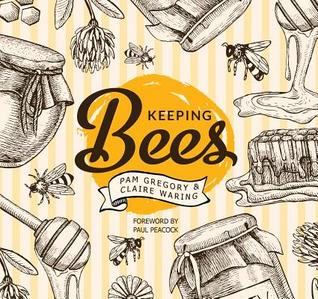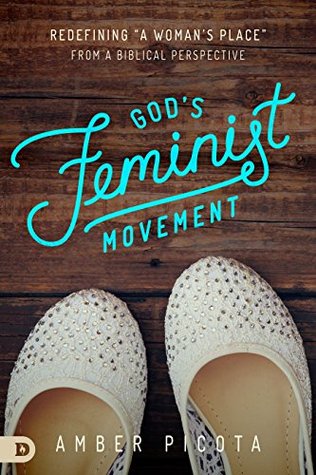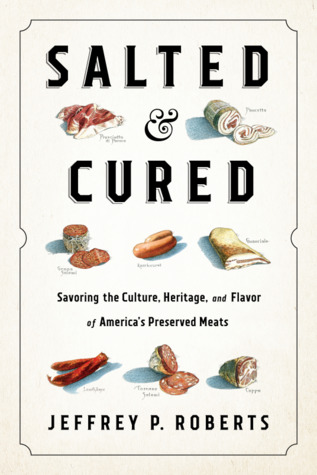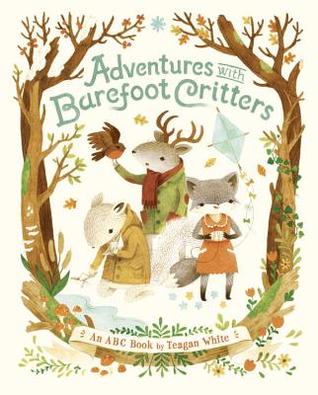
Keeping Bees by Pam Gregory & Claire Waring
This is a good introduction to keeping bees. There are chapters about bees and beekeeping, what keeping bees entails, the beekeeping year, harvesting honey, pests and diseases, and going further. While the later chapters were a bit more advanced and were somewhat over my head, I think this is a good beginning book. There are LOTS of full color pictures and illustrations that are very helpful. I find that with every book I read about beekeeping I learn a few more things that will help me with my bees. The only downside is that the authors are in the UK, so some of the things that are discussed don't apply in the US and that could sometimes be confusing. But, I did learn some new things and overall it was a good beekeeping book.

Pancakes in Paris by Craig Carlson
When you read about Craig's terrible family you can't help but root for him and hope that he's successful with his crazy idea. I liked Craig's back story and how everything came together with BIA for him, but it was really hard to read about how terrible some aspects of French culture are. While known for lots of vacation time, benefits, and a maximum 35 hour work week, it is also unbelievably difficult to fire an employee and the employer is ALWAYS at fault - Craig had countless lawsuits from employees and it seemed like that was pretty much the norm. I honestly don't know why or how he continued his business after all the lawsuits and employee issues. That really put a damper on the book overall for me. But, I was glad that Craig realized his dream and was successful despite all the roadblocks!

God's Feminist Movement by Amber Picota
I definitely consider myself a Christian feminist, but sometimes books on the subject can be a let down. Not this one! Picota does a great job of exploring what she calls God's Feminist Movement and backs it up with interpretations of scripture that is often taken out of context or used to keep women out of leadership. She gives her own personal stories and stories of others to flesh out her points, but I was most impressed with the hermeneutics. She explains the interpretation fully, but also in a way that someone who is not a Biblical scholar could understand - and that is not easy to do. One of her points that I really appreciated was that often people don't dig into the Bible for themselves, they just believe whatever they've been taught and that could be wrong. She really encourages everyone to dig into the Bible and make your own conclusions, but the Bible won't contradict itself, so if something seems to contradict there is more digging to find out the original context and meaning. Overall, a great book with a wonderful message.
Some quotes I really liked:
"You are not an animal, driven by instinct. Men are not animals, and it is about time we as women and mothers stop raising up our boys believing the lie that they don't have the power to take their thoughts captive and submit them to the obedience of Christ Jesus (see 2 Cor. 10:5). We cannot take the responsibility upon ourselves that we have the power to stop other people from sinning." (p. 87)
"For too long Christians have simply rammed abstinence down people's throats without even thinking twice about empowering them with the knowledge of freedom by helping them understand their worth and value to God." (p. 117)
"Sometimes I felt that I was wrestling with my own self. On the one hand, all I wanted was to be a quiet, meek, submissive Christian wife. And on the other hand, I had differing opinions than my husband. I had ideas. I had dreams. I had goals. The very painful truth is that in many Christian circles, women like me are labeled 'Jezebels' or 'rebellious.' Women like me who are strong and bold are often painted in a villainous light." (p. 134-5)
[During marital counseling] "Once we identified that we both were people with control issues, we did what any logical Christians would do: we tried to break my dominant little spirit. Not Rene's...mine. Because when a man has control issues, for some reason, much of the Christian community does not seem to have a problem with it. It's perceived as normal...So that's all there was to it. I just needed to put on my big girl britches, find a way to break my strong spirit, shut my brain off, and submit. I felt like a train was coming and I was preparing to let it hit me." (p. 137-8)
Some quotes I really liked:
"You are not an animal, driven by instinct. Men are not animals, and it is about time we as women and mothers stop raising up our boys believing the lie that they don't have the power to take their thoughts captive and submit them to the obedience of Christ Jesus (see 2 Cor. 10:5). We cannot take the responsibility upon ourselves that we have the power to stop other people from sinning." (p. 87)
"For too long Christians have simply rammed abstinence down people's throats without even thinking twice about empowering them with the knowledge of freedom by helping them understand their worth and value to God." (p. 117)
"Sometimes I felt that I was wrestling with my own self. On the one hand, all I wanted was to be a quiet, meek, submissive Christian wife. And on the other hand, I had differing opinions than my husband. I had ideas. I had dreams. I had goals. The very painful truth is that in many Christian circles, women like me are labeled 'Jezebels' or 'rebellious.' Women like me who are strong and bold are often painted in a villainous light." (p. 134-5)
[During marital counseling] "Once we identified that we both were people with control issues, we did what any logical Christians would do: we tried to break my dominant little spirit. Not Rene's...mine. Because when a man has control issues, for some reason, much of the Christian community does not seem to have a problem with it. It's perceived as normal...So that's all there was to it. I just needed to put on my big girl britches, find a way to break my strong spirit, shut my brain off, and submit. I felt like a train was coming and I was preparing to let it hit me." (p. 137-8)

The 15:17 to Paris by Anthony Sadler, Alex Skarlatos, and Spencer Stone
I was so excited to read more about the heroic actions of 3 friends who stopped a terrorist attack on a Paris train, but this book was a big letdown. I should have heeded the other Goodreads reviews because it was very poorly written and very choppy. I also found a few obvious spelling errors that didn't get caught before publication. The book is divided into 3 sections - one for each man, telling his side of the story. I thought it was going to be more of the guys telling their version of the event because the book reiterates that each person experienced the event differently. Honestly, I think you could understand what happened better from watching the guys doing TV interviews, the book barely touches on the actual terrorist event and how they stopped it. I was hoping for more especially the guys together going over what happened and how they each reacted. Overall, it was disappointing.

Salted & Cured: Savoring the Culture, Heritage, and Flavor of America's Preserved Meats by Jeffrey P. Roberts
I saw this book at the Mother Earth News Fair and decided to buy it. Jeffery Roberts explores the history of Salted & Cured meats in America. The first 2 chapters focus on the history of cured meats and meat production in America, then the rest of the chapters focus on a geographic area and how that area's culture (immigrant populations, weather, etc.) shaped the cured meats that were produced there. It's really nice to see so many businesses highlighted in this book that have been curing meat here for generations and still maintaining a high standard of both work and quality meat. Roberts also discusses some of the issues facing small, artisan producers of smoked, cured, and fermented products from USDA inspectors who don't always understand how these products are made. At the end of the book there is a list of all the businesses featured in the book and also a glossary in case you didn't know every type of cured meat that exists. Overall, a very interesting and unique book about an important part of America's food history and culture.
Some quotes I liked:
"The 2011 Food Safety Modernization Act added layers of new regulations, review, monitoring, and inspection. The new law established a wide range of standards, many of which impacted farmers, food producers of all sizes, and ultimately customers, who pay for increased business expenses. In some instances small artisan food producers, including those of cured meats, closed shop because they could not afford the costs to retrofit an old facility or build a new building." (p. 34)
"Cured meat was always about survival, ways to ensure we made it through winter or hard times. Life depended on the oral passage of skills from one generation to the next, a communication and transfer of knowledge and culture. For most Americans today survival isn't the issue; we are able to choose what, when, and how we eat. So in addition to the loss of skills, we no longer feel, appreciate, or understand the cultural context." (p. 92)
"The partners [of Salumeria Biellese] faced a disastrous situation: The USDA would not back down on its regulations, and Marc, Paul, and Fouad would not change the company's long-established methods of making its salami. The solution came about because of their stubbornness, unshakable belief in their products, and a $100,000 investment. They found a scientist cited in the USDA's literature whom they hired to run tests on the salami. In the wildest experiment imaginable, he injected the salami with pure Listeria monocytogenes and E.coli and then aged them following the Biellese model. The result, no dangerous bacteria present at all! The USDA accepted the findings, and the partners were back in business." (p. 118)
"In his book It's a Long Road to a Tomato, Keith Stewart relates his experiences as a longtime Union Square farmer and his appreciation of the deep connections he enjoys with customers. Whether it's someone on food stamps, a hipster couple, a Gramercy chef, or a neighborhood resident, all share a common bond, a democratic link around Keith's tomatoes and other fresh produce." (p. 133)
Some quotes I liked:
"The 2011 Food Safety Modernization Act added layers of new regulations, review, monitoring, and inspection. The new law established a wide range of standards, many of which impacted farmers, food producers of all sizes, and ultimately customers, who pay for increased business expenses. In some instances small artisan food producers, including those of cured meats, closed shop because they could not afford the costs to retrofit an old facility or build a new building." (p. 34)
"Cured meat was always about survival, ways to ensure we made it through winter or hard times. Life depended on the oral passage of skills from one generation to the next, a communication and transfer of knowledge and culture. For most Americans today survival isn't the issue; we are able to choose what, when, and how we eat. So in addition to the loss of skills, we no longer feel, appreciate, or understand the cultural context." (p. 92)
"The partners [of Salumeria Biellese] faced a disastrous situation: The USDA would not back down on its regulations, and Marc, Paul, and Fouad would not change the company's long-established methods of making its salami. The solution came about because of their stubbornness, unshakable belief in their products, and a $100,000 investment. They found a scientist cited in the USDA's literature whom they hired to run tests on the salami. In the wildest experiment imaginable, he injected the salami with pure Listeria monocytogenes and E.coli and then aged them following the Biellese model. The result, no dangerous bacteria present at all! The USDA accepted the findings, and the partners were back in business." (p. 118)
"In his book It's a Long Road to a Tomato, Keith Stewart relates his experiences as a longtime Union Square farmer and his appreciation of the deep connections he enjoys with customers. Whether it's someone on food stamps, a hipster couple, a Gramercy chef, or a neighborhood resident, all share a common bond, a democratic link around Keith's tomatoes and other fresh produce." (p. 133)

Adventures With Barefoot Critters by Teagan White (Children's Picture Book)
I just happened to see this book when checking in at work and was drawn to the beautiful illustrations. The Barefoot Critters go through the alphabet in a unique way and also include all the months of year and seasons. I just LOVE the beautiful illustrations and also the little mouse doing something cute in each picture! I also love that they include collecting honey and exploring in nature. The next book in this series will focus on counting. A beautiful picture book with a unique look at the alphabet with a group of cute critters.

The Nordic Theory of Everything by Anu Partanen
When Anu Partanen meets an American man and falls in love she eventually decides to move to America to marry him. Once here Anu is overwhelmed by how different everyday things are from her native Finland. Finding health insurance, doing taxes, going to the DMV are all ordeals that take her forever to understand and figure out. In The Nordic Theory of Everything she explores the differences between Finland and other Nordic countries and the US in major areas like education, healthcare, and business. While Anu loves her new country, she does think America could be better off if it were to have a more Nordic culture and attitude.
It was a very interesting and unique book, but I was hoping for more of her personal story. This does have her personal and other stories added to illustrate points, but overall it's more of a comparison of country policies. So parts were a little bogged down in detail and history, but it was still interesting.
Some quotes I really liked:
"'In the United States there is both a moral, and to some extent legal, expectation that parents provide for their children even after the children have come of age,' Trägårdh said. 'But this expectation also means that parents have power over their children.'...[the Nordic theory of love] creates relationships that are much freer of resentment, guilt, and baggage." (p. 52)
"Finns still see the basic goal of public education as preparing children not for standardized tests, not for college applications, and not for specific jobs or industries, but more generally for life, although a life that takes place in the twenty-first century. Schools aim to graduate well-rounded human beings who are creative as well as technically skilled. To this end, physical education , arts, and crafts remain crucial elements of the permanent curriculum, alongside more academic subjects. All students - girls and boys - must even study carpentry, sewing, and cooking." (p. 141)
"During the last year that I lived in Finland and worked a regular full-time job, as a magazine editor, I made the equivalent of $67,130 - well above the median Finnish salary. After some standard deductions my taxable income was $61,990. So how much did I pay in taxes? The figure came to $18,973 in national and municipal taxes, or 30.6 percent. Before drawing a conclusion about that figure, keep in mind I didn't have much else to pay beyond that...Here are some of the things that paying my Finnish taxes bought me: smoothly functioning and comprehensive health insurance, a full year of partially paid disability leave, nearly a full year of paid parental leave for each child and a smaller monthly benefit for an additional two years (should I or the father of my child choose to stay home longer with our child), affordable high-quality day care, one of the world's best K-12 education systems, free college, and free graduate school. My taxes in Finland were not used to hand out money to some lazy moochers living on welfare; instead they were used to pay for high-quality services for me. As far as I was concerned, it was a bargain." (p. 235-6)
"When the Finnish government sends every single Finnish family in the country a payment of more than a hundred dollars every month for each child, the families are clearly aware of the support they are receiving. But when the United States offers families with children the Earned Income Tax Credit - if they qualify - or the Child and Dependent Care Tax Credit, many recipients fail to understand that they are receiving a direct cash benefit from the government." (p. 239)
"Nordic workers often prefer to take time over money, because at a certain point, the secret Nordic people know is that time off buys you a better quality of life than more cash. Those four or five glorious weeks of paid summer vacations that people in the Nordic countries enjoy really just mean that the employer is spreading eleven months of pay over twelve." (p. 294)
It was a very interesting and unique book, but I was hoping for more of her personal story. This does have her personal and other stories added to illustrate points, but overall it's more of a comparison of country policies. So parts were a little bogged down in detail and history, but it was still interesting.
Some quotes I really liked:
"'In the United States there is both a moral, and to some extent legal, expectation that parents provide for their children even after the children have come of age,' Trägårdh said. 'But this expectation also means that parents have power over their children.'...[the Nordic theory of love] creates relationships that are much freer of resentment, guilt, and baggage." (p. 52)
"Finns still see the basic goal of public education as preparing children not for standardized tests, not for college applications, and not for specific jobs or industries, but more generally for life, although a life that takes place in the twenty-first century. Schools aim to graduate well-rounded human beings who are creative as well as technically skilled. To this end, physical education , arts, and crafts remain crucial elements of the permanent curriculum, alongside more academic subjects. All students - girls and boys - must even study carpentry, sewing, and cooking." (p. 141)
"During the last year that I lived in Finland and worked a regular full-time job, as a magazine editor, I made the equivalent of $67,130 - well above the median Finnish salary. After some standard deductions my taxable income was $61,990. So how much did I pay in taxes? The figure came to $18,973 in national and municipal taxes, or 30.6 percent. Before drawing a conclusion about that figure, keep in mind I didn't have much else to pay beyond that...Here are some of the things that paying my Finnish taxes bought me: smoothly functioning and comprehensive health insurance, a full year of partially paid disability leave, nearly a full year of paid parental leave for each child and a smaller monthly benefit for an additional two years (should I or the father of my child choose to stay home longer with our child), affordable high-quality day care, one of the world's best K-12 education systems, free college, and free graduate school. My taxes in Finland were not used to hand out money to some lazy moochers living on welfare; instead they were used to pay for high-quality services for me. As far as I was concerned, it was a bargain." (p. 235-6)
"When the Finnish government sends every single Finnish family in the country a payment of more than a hundred dollars every month for each child, the families are clearly aware of the support they are receiving. But when the United States offers families with children the Earned Income Tax Credit - if they qualify - or the Child and Dependent Care Tax Credit, many recipients fail to understand that they are receiving a direct cash benefit from the government." (p. 239)
"Nordic workers often prefer to take time over money, because at a certain point, the secret Nordic people know is that time off buys you a better quality of life than more cash. Those four or five glorious weeks of paid summer vacations that people in the Nordic countries enjoy really just mean that the employer is spreading eleven months of pay over twelve." (p. 294)

Year of No Clutter by Eve O. Schaub
Eve Schaub has always been a collector and always had a hard time separating her memories from physical objects. But, she knows she has a problem when the biggest room in her house morphs into the Hell Room. Literally a room crammed with everything imaginable that she doesn't want to deal with in the moment. She decides that over the course of a year she will sort through, throw away, donate, etc. and finally deal with the Hell Room. What I liked the most about this book is Eve's honesty about her love of things and stuff. She doesn't go the Marie Kando route of extreme minimalism, but honors herself and her collections and love of things. By the end of the year the Hell Room is not perfect and it's not 100% done, but more than just that room has been changed. And on her website you can see a video before and after of the Hell Room: https://eveschaub.com/category/year-o.... This is a great, honest take on dealing with clutter and stuff from someone who is not trying to guilt you into throwing away all your stuff.
A quote I really liked:
"There's nothing wrong with keeping things other people deem strange because it's not the things you keep that make you a hoarder. What makes you a hoarder is whether it takes over." (p.167)
A quote I really liked:
"There's nothing wrong with keeping things other people deem strange because it's not the things you keep that make you a hoarder. What makes you a hoarder is whether it takes over." (p.167)

It's a Long Road to a Tomato by Keith Stewart
This book was mentioned in another book I read recently, Salted & Cured, and it sounded interesting so I put it on hold. Keith Stewart was working in New York City at a consulting firm and as he approached middle age he felt like there had to be a better way to live. He and his future wife cash in their retirement savings to buy 88 acres in upstate New York and start a small organic farm. Twenty years later he's still happy with his decision to go from corporate drone to farmer. It's a Long Road to a Tomato is a collection of essays from Stewart about everything from his personal farm journey to GMO's and the decline of small farms in America and pretty much everything in between. While many of his essays are interesting, I guess about half way through it started to feel kind of repetitive to me. I did like it, but it wasn't as good as I was hoping it would be.